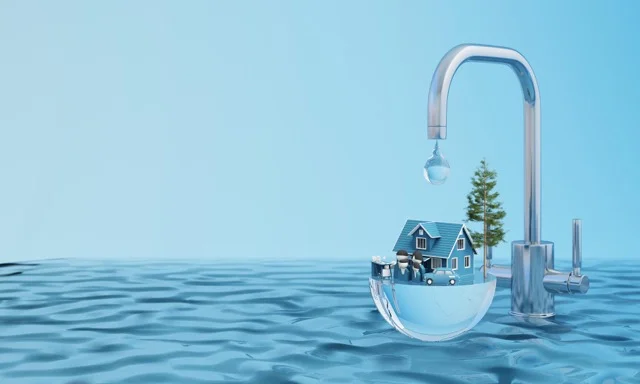Reclaim Waste Fundamentals Explained
Table of ContentsFascination About Reclaim WasteThe Best Guide To Reclaim WasteNot known Details About Reclaim Waste What Does Reclaim Waste Do?Not known Details About Reclaim Waste
Explore the kinds, incidents, and forms of liquid waste. Residential sewer waste refers to the waste and items from a household sewage-disposal tank. This kind of waste is created by humans in residences, institutions, and various other buildings. This only consists of septic containers that have a drain area. The appropriate management and disposal of residential sewage waste call for fluid waste to be transferred to a sewer treatment plant where the proper approaches and devices are used to purify and get rid of waste.
Commercial waste usually includes prospective threats, such as flammable products or a mixture of fluid and strong waste items, and needs a more sophisticated and in-depth disposal procedure. The disposal of commercial waste normally includes the purification of waste before transportation to guarantee secure and proper disposal. Industrial waste is created from results and drainage of commercial procedures and production.
This kind of waste can not utilize the exact same sewage management transport or processes as septic or business liquids. The hazardous waste management procedure calls for the inspection and testing of fluid waste before it undergoes the disposal process (industrial wastewater treatment). Runoff waste is the liquid waste that comes from drainage and excess stormwater in very booming locations or cities
Runoff waste can cause contamination and flooding if not dealt with effectively. Find out extra about sewage system cleansing and waste management. Guaranteeing appropriate waste management can avoid catastrophes and minimize environmental harm. Both people in household setups and professionals in commercial or manufacturing sectors can profit from recognizing the procedures and policies of liquid waste management.
Everything about Reclaim Waste
Get in touch with PROS Providers today to discover our waste management and disposal services and the proper means to look after the fluid waste you generate.
This supposed 'wastewater' is not only a crucial resource however, after treatment, will certainly be launched to our land, rivers or the sea. Utilized water from commodes, showers, bathrooms, cooking area sinks, laundries and commercial processes is known as wastewater.

water made use of to cool equipment or clean plant and equipment). Stormwater, a kind of wastewater, is drainage that moves from agricultural and metropolitan locations such as roofings, parks, yards, roads, paths and rain gutters right into stormwater drains, after rain. Stormwater streams neglected straight to neighborhood creeks or rivers, at some point reaching the ocean.
Reclaim Waste Things To Know Before You Get This
In Queensland, the majority of wastewater is treated at sewer treatment plants. Wastewater is delivered from residential or commercial websites with a system of drains and pump terminals, recognized as sewage reticulation, to a sewage therapy plant.
The Department of Natural Resources recommends city governments concerning handling, operating and preserving sewage systems and therapy plants. In unsewered locations, city governments may require owners to mount specific or house sewage treatment systems to treat domestic wastewater from commodes, kitchens, washrooms and washings. The Division of Natural Resources authorizes using home systems when they are proven to be effective.
The majority of stormwater obtains no therapy. In some new communities, treatment of some stormwater to eliminate clutter, sand and gravel has actually begun using gross contaminant catches. Wastewater therapy occurs in four stages: Gets rid of solid issue. Larger solids, such as plastics and various other objects wrongly discharged to sewers, are gotten rid of when wastewater is passed with screens.
Utilizes little living microorganisms understands as micro-organisms to break down and get rid of remaining dissolved wastes and great particles. Micro-organisms and wastes are integrated in the sludge.
Reclaim Waste - Truths
Nutrient elimination is not available whatsoever sewage treatment plants because it calls for expensive specialised tools. It is coming to be much more typical in Queensland. Clear liquid effluent produced after treatment may still include disease-causing micro-organisms. If this effluent is launched right into waterways such as rivers or the sea, the micro-organisms will at some point die out.

Many wastewater moves right into the sewerage system. Under the Act, regional governments carry out approvals and permits for ecologically pertinent tasks (ERAs) including wastewater launches that could have a neighborhood impact.
Reclaim Waste for Beginners
Monitoring supplies factual details about water top quality and can verify that licence problems are being fulfilled. The details obtained via monitoring he said gives the basis for making water high quality decisions.
Comments on “Some Known Facts About Reclaim Waste.”